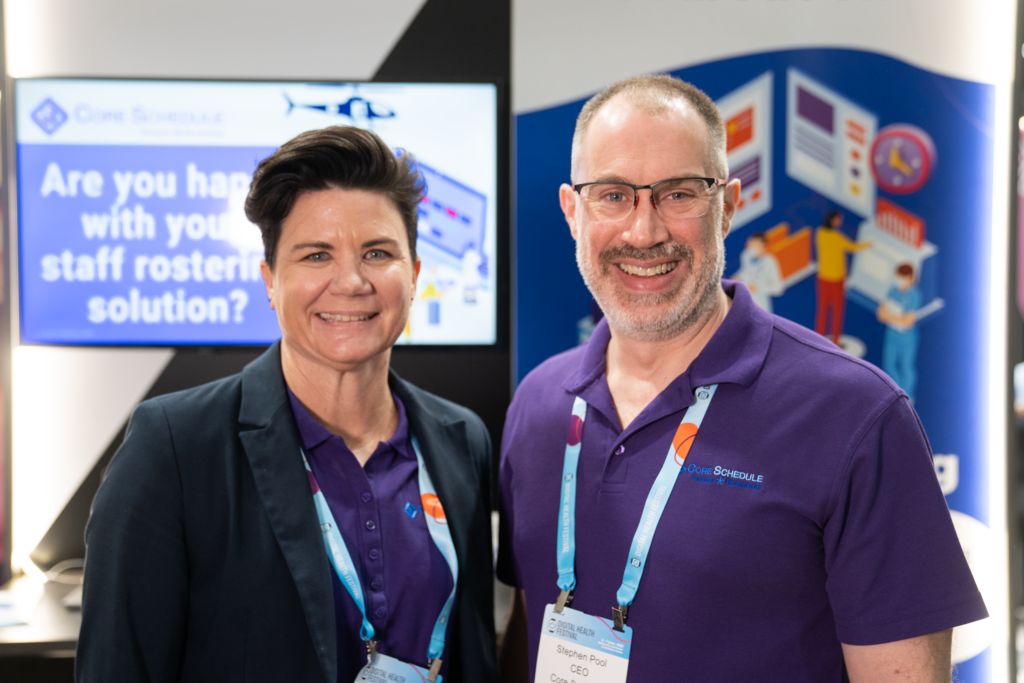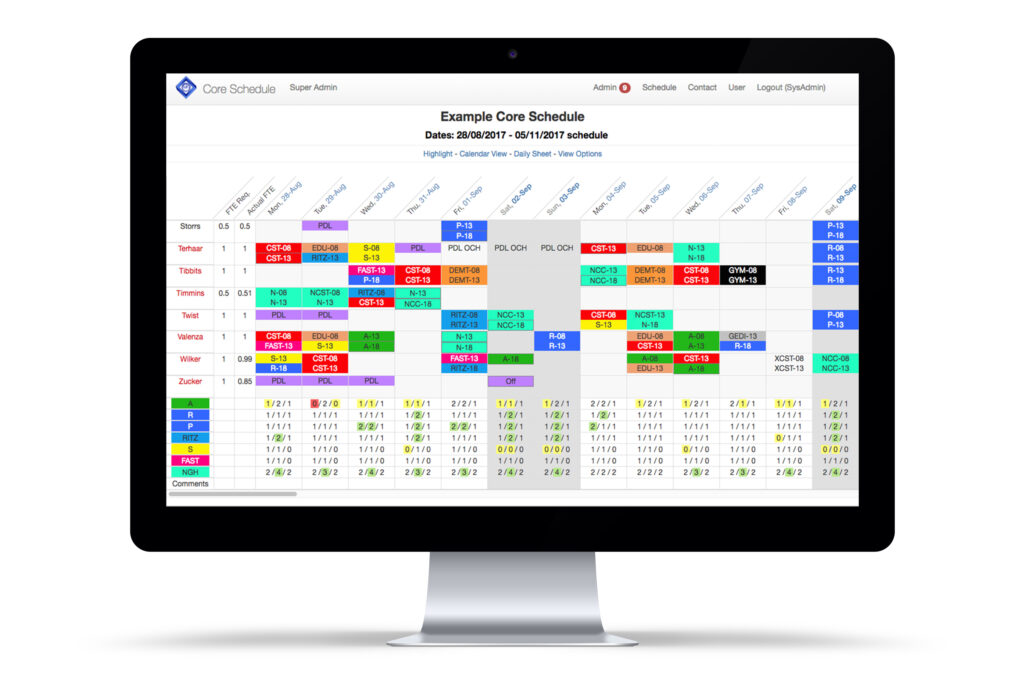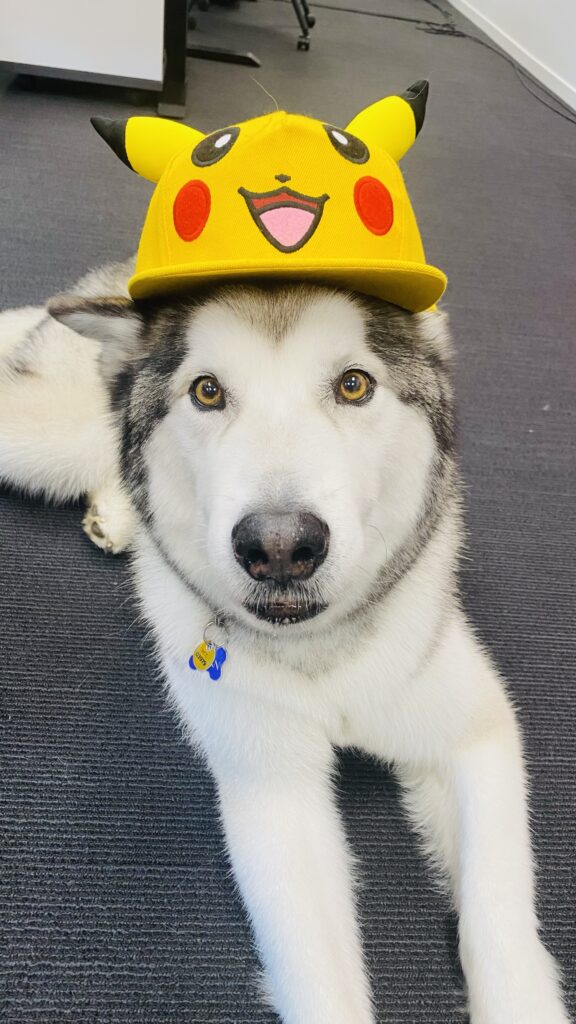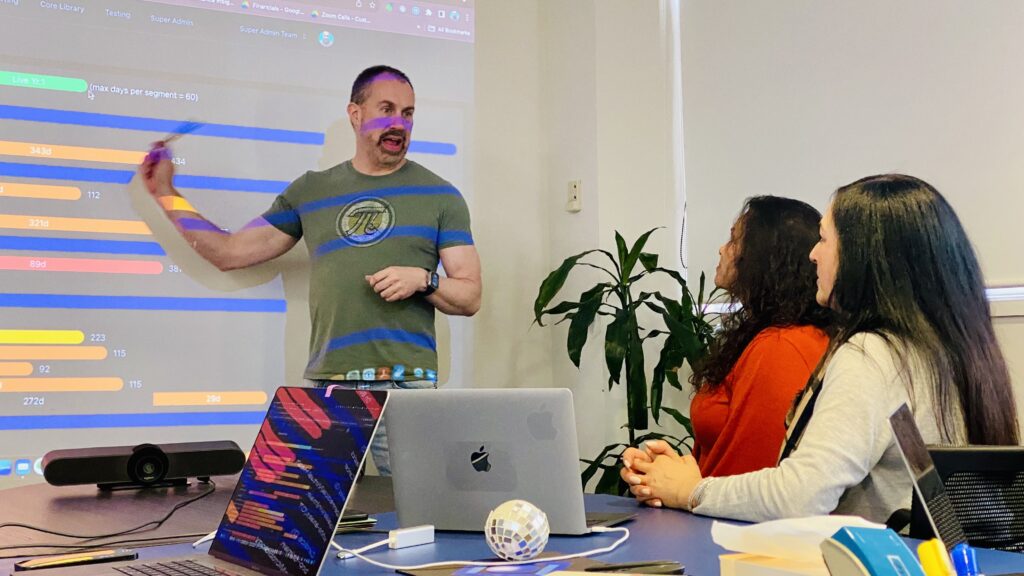Thank God for modern medicine.
Leeches and chloroform? No thanks. This is the 21st Century, and when one seeks medical attention, one can expect some of the very best tools, talent, and technology the modern world has to offer, thank you very much.
Yup, the average hospital boasts enough front-of-house fancy tech to blow anyone’s mind.
If you’re checking out the back-office systems, however, prepare to be underwhelmed.
As far as modern business practices go, the legacy tech found in otherwise modern medical institutions is all too often downright primitive, including (and perhaps especially) the notoriously improvised rostering practices that exist in many emergency departments today. Just ask Stephen Pool, emergency medicine specialist and the brain behind the cloud-based staff rostering tool Core Schedule. Stephen spent years navigating the excitement and chaos of New York’s emergency departments and has experienced the madness that goes with out-of-control roster systems first-hand.
“A lot of rostering processes are very poorly managed, even in the most prestigious hospitals,” says Stephen. “Every department runs its own rosters, nothing is shared, there’s no central oversight, and it’s impossible to figure out what’s going on. It’s chaotic.”
It’s also dangerous as hell.

“You might get a doctor who has worked seven nights in a row, and no one realises. They come back the next morning and they’re still working, but they’re exhausted, they’re frustrated and they’re not making sane decisions. That impacts patient care.”
Dr Stephen Poole

Somehow, it’s worse than you think. Once, while working in New York, Stephen tried to book leave with his emergency department’s HR, only to be given a hand-drawn transparency and a printed-off Excel Sheet.
“They said ‘Hold this up to the window and move the transparency around until you see where the gaps are in the leave schedule’.”
“I couldn’t believe that this was the state of rostering in a hospital in this day and age.”
When Stephen later voiced his surprise and concern to HR, they told him: ‘If you think you can do better, have at it’.
And so, he did. A self-taught programmer with a web-dev background, Pool set about digitising the hospital’s archaic roster system, and within weeks, his new solution was up and running.
And it really worked. The platform drew immediate praise from peers and HR department alike, so Stephen spent the following month adding more helpful functionality – increasing schedule visibility for employees, facilitating shift trading and the like – to the delight of all.
So far, so good.
Word spread to other NYC hospitals.
Then Stephen started receiving requests to overhaul their rostering systems.
Paging Doctor Pool; Doctor Pool to HR departments everywhere, please.
Emergency medicine is a thrilling, exhausting, encompassing occupation. But so is building a tech start-up.
After five years of juggling ED shifts with the demands of a budding software side hustle, Pool was approaching burnout.
And also, betrothal. Somehow Pool found time to marry long-time partner Neil, and, with knot tied, the couple visited New Zealand for a two-week action-adventure honeymoon.
They loved the place – everyone does – but had no intentions of upending their life to move here. Until that is, Stephen found out from a Stateside friend how easy we make it for American doctors to live and work here.
One thing led to another, and when a tentative job application to a Wellington employer turned into a concrete offer, he and Neil jumped at the chance.
A month later Stephen was walking into a new job at a Wellington emergency department and wondering just what he’d gotten himself into.

All this time, the Core Schedule platform had been growing – slowly, steadily, and organically – and consuming more and more of Stephen’s time.
Could Core Schedule stand on its own? When Stephen learned that a high-profile emergency medicine conference was scheduled to happen in Christchurch, he decided to find out once and for all.
Printing brochures and securing a table, Stephen and Neil officially presented the Core Schedule platform to industry peers for the first time – and the response was immediate.
“By the time we left the conference, we’d doubled our customer base,” says Stephen, with a touch of disbelief. “That was when I realised, I was having so much more fun building Core Schedule than I was in the clinical practice.”
Put another way, he was ready. He quit his full-time ED gig and went all in on Core Schedule.
The software sold itself. Every new rollout seemed to spawn a host of new referrals – referrals that needed to be followed up. Neil officially joined the business and the pair started building a team.
Soon seven employees were on board, working out of the family home. Monday meetings were held at the kitchen table.
“Every time we hit a new conference we doubled our business,” says Stephen.
What we were saying resonated with everyone we talked to. We could start with just a small contract in an emergency department and within six months we would be hearing from all these different parts of the hospital.”
Dr Stephen Pool

The company was expanding quickly, scoring contracts to roll Core Schedule out across entire hospitals and DHBs, selling into Australia, and even securing shiny new offices on both sides of the Tasman.
Then came COVID. As the pandemic spread from continent to continent, and the potential impacts became known, hospitals everywhere mobilised as never before.
And Core Schedule had its biggest month ever.
“Everybody was trying to fix their roster systems at the last minute, either up-staffing or completely changing the way their workers were rostered. We just had to keep up with the work.”
Dr Stephen Pool
A very good time, therefore, to receive a call from Punakaiki Fund co-founder Lance Wiggs.
“We’d spoken with Lance in 2019, and while he was interested, he had very respectfully told us: ‘You’re a little bit early for us, but we’re going to keep following you’.”
When COVID hit, he checked in again, and this time everything clicked.
Punakaiki led a funding round, providing the primed and ready Core Schedule with a NZ$0.7m shot in the arm.
But every story needs a twist, and here is this one: once the COVID lockdowns tightened down on New Zealand and Australia, the phone stopped ringing.
“We had just finished our funding round and everything just stopped,” says Stephen. “Every hospital that hadn’t already signed with us just couldn’t deal with anything – they were just trying to keep afloat.”
Right when they should have been thriving like never before, Core Schedule’s big aspiration had turned to a rattle.
“It was soul-crushing,” admits Stephen. “But I knew we just had to ride it out.”

And they did.
As the COVID menace retreated, so too did the institutional hesitation, and since then, Core Schedule has continued to build rapidly. The software is currently in use in over 100 hospitals, including 18 Kiwi DHBs, with major clients in Australia and the United States.
“We’ve only just scratched the surface of the market here and in Australia, so we’re in a great place,” says Stephen. “We’re in conversations with major hospitals and networks, we’re launching new telehealth products, and we’re being sought out by new customers.”
A second, smaller Punakaiki-led funding round was completed after the end of the September quarter, and Pool is considering another in the next 12 to 18 months.
“Connecting with Punakaiki Fund is one of the best things that has happened to us,” enthuses Stephen. “Nadine, our board member from the group, brings such expertise to the group. It’s great to be able to tap into that expertise when we need it.”
“We really do view Punakaiki as a partner.”
With that support, Pool is confident Core Schedule is a winner.
“Look, our number one competitor is Excel,” he laughs. “I know, I know. It’s shocking.”
“But with all that has happened, Core Schedule is now extremely well-positioned. We’ve got a primo product in a growing market. We’ve figured out what works and now we’re growing and expanding on that.”
But with all that has happened, Core Schedule is now extremely well-positioned. We’ve got a primo product in a growing market. We've figured out what works and now we’re growing and expanding on that.”
Dr Stephen Pool
“The future looks bright.”